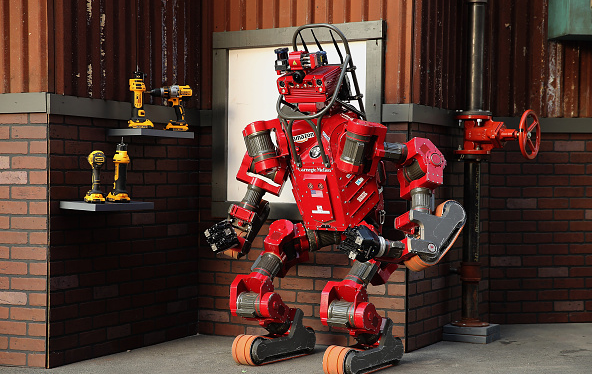
DARPA Robotics Challenge 2015
This weekend, the Pomona Fairplex hosted the DARPA robotics challenge featuring top robotics teams from colleges around the world competing for 3.5 million dollars. We got a chance to see which team’s robot is ready to handle disasters and stair climbing. This year’s challenges were designed to mimic what a robot may face in a real world disaster, such as the Fukushima nuclear plant incident.
Let The Games Begin
The challenges included having a robot drive a UTV, open a door, use an electric saw to cut into a room, turn off a circuit breaker, navigate cinder blocks and climb stairs. While this might not sound too difficult, it’s pretty close to impossible to do these tasks using AI alone.
While we watch these events each year for fears this will be the day the robots win. They do have some trouble with the most basic of functions, and there were plenty of spills and general robotic drunkenness you would expect.
Drunken Robot Action
Each year we get closer to a robot that can get through these challenges and eventually be tasked with taking on disaster scenarios that would put people and rescuers at risk. While we do have some remote controlled robots that can do things like, defuse bombs, it’s important to keep in mind robots in the DARPA Robotics Challenge aren’t being controlled remotely. They are tasked with figuring out how to handle these problems on their own. Like babies learning to walk and handling tasks on their own, they make it through each obstacle with much calculated effort.
It’s All Fun And Games ‘Til Someone Loses An Eye.
While this and other events focus on the helpful uses for robots, like fighting fires and helping with disasters, we have to expect these robots are the forefathers to future robotic soldiers that we may see in our lifetimes. With the ability to navigate rubble, hold a gun and make decisions on their own, these robot soldiers will have real-world skills soldiers need. Giving the robots humanoid appendages such as hands and legs means they can eventually handle any human job whether that’s flying a plane or driving a tank. It also means it’s easier to replace human soldiers in dangerous situations. Let’s say you need someone to drive a tank into a radioactive or gas filled area, robot soldiers would naturally cut down the risks involved with war.
For more information about the challenge and the winner’s check out this site.
